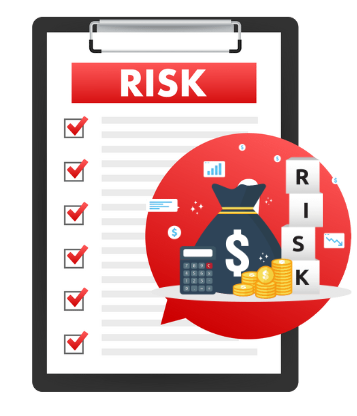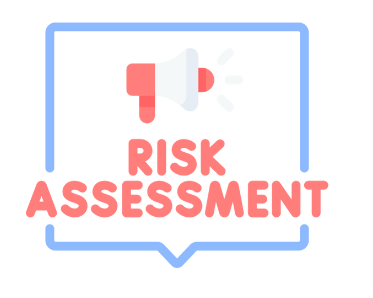Financial risks are money-related failures that a company can go through when it starts a business or makes an investment. In general, it is associated with the possibility that a company’s cash flow may not prove adequate to carry out its operations or meet its goals. It applies to governments as well that default on their bonds as well.
There are several types of financial risks when it comes to a business. These include market risk, credit risk, liquidity risk, operational risk, and so on. With proper management, all these risks can be tackled so the company can run smoothly.
Several tools are used for financial risk management. All of these centre around some basic steps. These incorporate the identification of prospective financial risks, prioritizing those risks, formulating and implementing risk responses, and then monitoring them. We shall understand financial risk management and its tools in detail.
What Are Financial Risks?
Financial risks, in general, or business risks, are the possibility of making monetary losses in a business venture or via an investment decision. It can be defined as an aspect of business that threatens the capital of shareholders and the very survivability of a business.
Some of the most common financial risks include liquidity risk, credit risk, and operational risk. All these risks have the potential to threaten the finances of the company and may lead to considerable financial losses.
Financial risk is when a company cannot meet its operational costs, and fixed charges such as interest payments, fulfillment of credits, dividends, repayment, etc. It generally arises due to instabilities in the market, financial losses in the market, economic depression, currencies, inadequate movement in stock prices, changing interest rates, etc.
Financial Risks: Key Takeaways
- Financial risk is the prospect of monetary loss in a business venture. Individuals, businesses, and governments face financial risks.
- There are varied types of risks involved in finances. Major financial risks include credit risk, market risk, liquidity risk, and operational risk.
- Financial risk management involves various techniques such as SWOT analysis, financial risk register, impact matrix, financial risk acceptance, and many more.
The Aspect of Financial Risk in Business
From the very beginning to the end, there are several ways in which financial risks are involved in a business. It is not an easy task to establish a business. The setting up of any business requires funding. This initial risk is faced by the business, its stakeholders and those investing. Businesses face financial risks due to varied macroeconomic forces. These can be unfavorable changes in stock prices, financial losses in the market, the possibility of default by company sectors etc.

Besides, there is credit risk involved. It refers to the dangers that are associated with borrowing money in a business venture. Investors in such a case may lose their invested capital and receive decreased loan repayments. Credit risk showcases an investor’s uncertainty about return collection and prospective financial loss.
A business faces operational risk when it has flawed operational management. It is based on internal factors of the company and showcases a failure in achieving its operational goals which may lead to potential monetary losses.
Pros and Cons of Financial Risk
Though financial risk may seem a negative aspect of a business venture, it has some pros as well:)
| PROS | CONS |
| Financial risk aids in making more informed decisions. | Financial risks are unpredictable and arise from outward sources. |
| It assists in assessing values like risk-reward ratio, etc. | They are difficult to overcome and sometimes become uncontrollable. |
| They can be identified via analysis tools. | They spread to different sectors or markets. |
What are the major types of Financial Risk?
Financial risks are a vital business concern. They come forward as a major challenge for business enthusiasts and are a push factor in the rising demand for Financial Risk Managers (FRM).
Financial risks are majorly divided into four types. These are market risk, liquidity risk, credit risk, and operational risk. In addition to these four risks, legal risk is often considered a notable financial risk as well. Let us go through these significant financial risks.
Credit risk arises when a company fails to fulfill its obligations to their counterparts. It is often called default risk and can be classified into credit events, settlement risk and sovereign risk.
Settlement risk is the risk that arises when one party fulfills its obligations and the other one fails to make the payment. Difficult foreign exchanges lead to sovereign risk.
- Market Risk
Movement in financial instruments leads to market risk. They can be classified into absolute risk, relative risk, directional risk, non-directional risk, basis risk and volatility risk.
Movements in stock prices, interest rates, etc. cause directional risks whereas non-directional risks are volatility risks.
- Liquidity Risk
When there is an inability to execute transactions, it gives rise to liquidity risk. There are two types of liquidity risk: Asset Liquidity Risk and Funding Liquidity Risk.
- Operational Risk
Operational mismanagement or technical failures lead to operational risk. It can be classified into fraud risk, people risk model risk, and legal risk. Incorrect model application causes model risk, whereas fraud risk arises because of lack of controls.
- Legal Risk
Legal risk is generally considered a part of operational risk. Legal constraints such as lawsuits that may cause financial losses come under legal risk.
Non-Financial Risks
Financial risks are the highest priority risk for any business. However, there are other risks involved in a business that are particularly non-financial. These are classified into business risks and non-business risks.
- Business Risk
These risks are taken by businesses themselves to boost their profits. For instance, businesses often take risks while launching a new product to make profits in sales.
- Non-Business Risk
These risks are those that are not controlled by businesses. They arise out of political aspects and economic imbalances.
Financial Risk Management
Financial Risk Management is the process of protecting the financial worth of a company or business by adequately managing prospective exposures to all types of financial risks. These mainly include market risk, credit risk and operational risk with several variants.
It is the practice of identifying, analyzing, accepting, and mitigating uncertainties in investments and other financial decisions.
There are numerous ways to mitigate financial risk. They include efficiency evaluation, maintenance of emergency funds, quality assurance, keeping low accounts receivable (AR), reduction of excess debt, diversification of investments, carrying insurance, and much more.
Major financial risk management strategies incorporate risk identification, risk avoidance, risk reduction, risk retention, and risk transfer. Let us understand some significant tools to control financial risk in the next subheading.
12 Vital Strategic Tools to Manage Financial Risk

Major financial risk management tools or strategies include:
- Financial Risk Identification
Financial risk identification involves the identification of prospective financial risks that can affect the operations of a company. Checklists, brainstorming risks and their documentation are ways to identify risks.
- Financial Risk Data Quality Assessment
This technique involves the assessment of risk data and checks its reliability and credibility to ensure that financial risk decisions are made accurately.
- Impact Matrix and Probability
Impact matrix and probability is a foundational strategic tool utilized for financial risk management. It involves the categorization of risks, representation of severity of risks, and prioritization.
- Financial Risk Registers
Financial risk registers are documents that contain all the information about financial risks, their status and management plans.
- SWOT Analysis
SWOT analysis is a risk management tool. It aids in identifying weaknesses, strengths, opportunities and threats associated with business competition.
- Decision-making
Decision-making involves strategies to identify risks and balance cash flow for adequate financial risk management. It involves the analysis of alternatives, the use of decision trees and the involvement of stakeholders.
- Analysis of root causes
Another financial risk management technique involves the analysis of the root causes and the implementation of long-term strategies.
- Financial Risk Acceptance
This technique involves the acceptance of risk, reserves low-impact risks, inclusion in the risk register and monitoring.
- Financial Risk Reassessment
Reassessment involves the periodic review, adjustment of financial risk priorities and adaptation of plans of risk management. It focuses on the reevaluation of strategies so that they remain effective and relevant.
- Financial Risk Monitoring
This involves the process of tracking risks, monitoring those risks, and identifying newer risks. It incorporates the adjustment of financial risks.
- Financial Reserves Analysis
Financial reserves analysis incorporates contingency reserves as time, money, and resources based on risk analysis.
- Riskonnect Software
Riskonnect is a leading software for financial risk management. It offers a comprehensive set of applications to help manage, identify, mitigate, and control financial risks. It offers customisable workflows and dashboards, real-time analytics, and reporting.
Build a Career as a Financial Risks Manager with PW Skills
Learn the major fundamentals of Financial Risk Management to become an expert financial risk manager and draw effective financial strategies with our Financial Mastery Analysis and Modeling Course.
Get a strategic hold on finances and financial management with in-depth learning through interactive classes covered by expert mentors, practice exercises, certification, projects, and much more only at pwskills.com
Also Read:
- Objectives of Financial Management
- Finance vs Accounting: Which One Should You Choose?
- 10 Major Roles and Functions of Financial Management
Financial Risks FAQs
Q1. What are the 4 types of financial risks?
Ans: Financial risks are an important aspect of running a business. There are mainly four types of financial risks. These are:
1. Market Risk
2. Credit Risk
3. Liquidity Risk
4. Operational Risk
Q2. What are financial risks?
Ans: Financial risks are prospective monetary losses associated with a business venture or an investment decision. It is a threat that relates to the loss of capital to shareholders. The most common financial risks include market risk, credit risk, operational risk and liquidity risk.
Q3. What is risky in finance?
Ans: Capital, share value of shareholders, business survivability and profitability are all at risk in finance. Financial risk affects the successful run of a business and may lead to monetary losses.
Q4. What is the most important financial risk?
Ans: Liquidity risk is often considered the most important financial risk as it affects the very survivability of the business. It showcases the prospects of a business going insolvent. Liquidity risk can be classified into two types: asset liquidity risk and funding liquidity risk.

